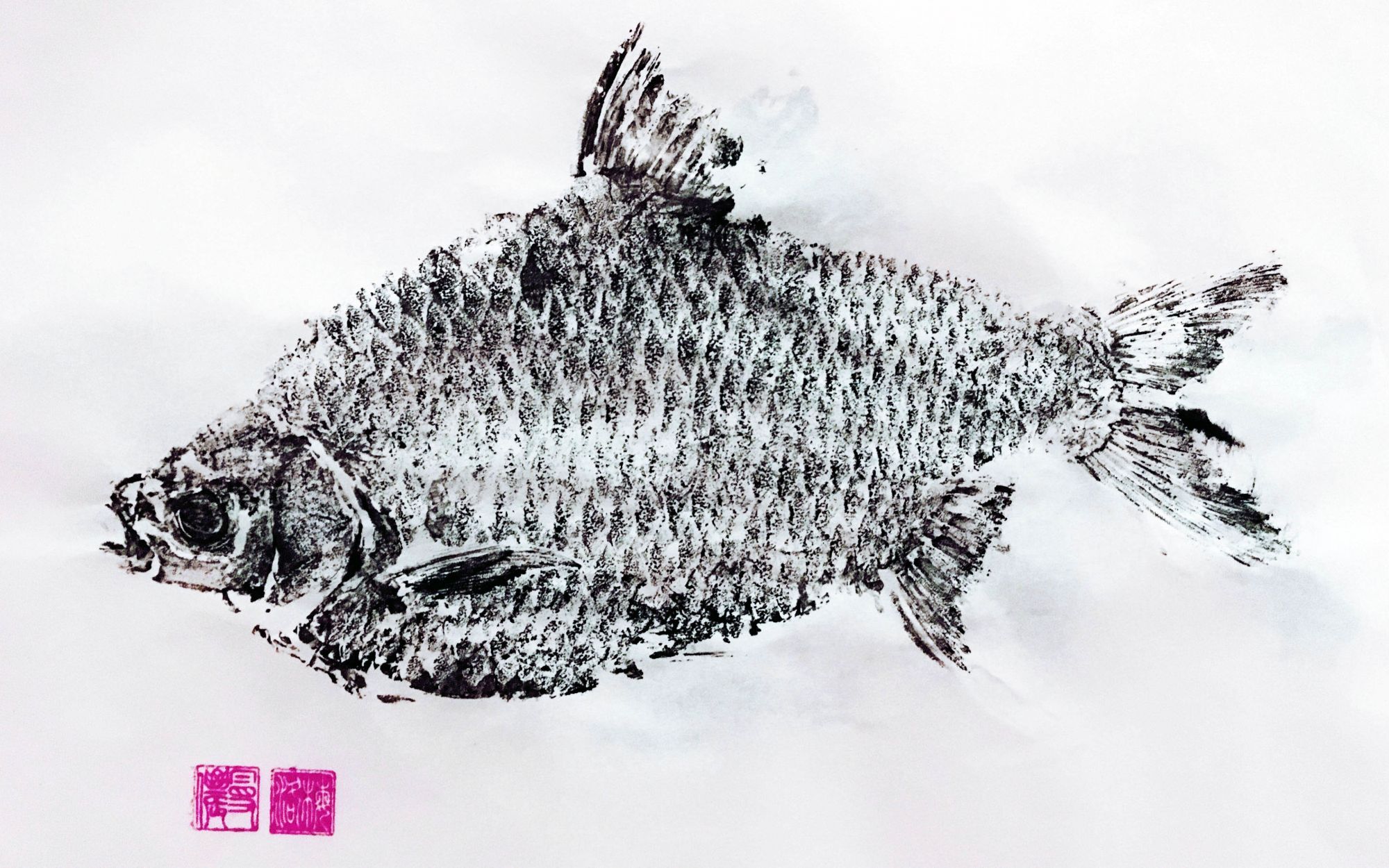Some naturalists press flowers, others collect insects, and a handful make prints of ocean life or gyotaku. João Melo and Manon Victoria Bouté of Sakana Studio fall into the third category. Read our interview with the couple to learn about the ancient art form invented by fishermen to document their prize catches. With the advent of photography, gyotaku has evolved, becoming more a means of expression than an exigency.
Are both of you in the food and beverage industry? Surely that’s how you’ve come to have access to your 'art materials.'
Just Joao! He’s been a chef for the past decade and has spent the last 6 years in Malaysia. But he studied photography and visual language at Ar.Co, an art school in Lisbon, Portugal. Joao has always enjoyed access to different types of seafood at work. Most of the fish and octopuses are sourced from local markets, fish mongers or by spearfishing.
Manon grew up and lived in Southeast Asia for most of her life; in Laos, precisely. She moved to Paris to complete her studies in Interior Design, but has been working at a design and architecture firm in KL for over 3 years.
What sparked your love of gyotaku? A trip to Japan, perhaps?
We are avid collectors of ocean-related ephemera – from drift wood to seashells and even boat parts, but lacked visual documentation of a fish’s true form and movement. We discovered gyotaku, a centuries-old art form, via research. With the help of Manon’s watercolour and sketching skills, it was the best form of expression we could think of – transmitting raw images of these fascinating creatures that would last long after they were gone.

A quick Google search revealed that there are 3 kinds of gyotaku: Chokusetsu-ho (direct method), Kansetsu-ho (indirect method) and Tensha-ho (transfer method). Which type(s) does Sakana Studio practice?
We use a direct print technique following the original gyotaku method. We try to be as traditional we possible, and avoid any retouching to keep our prints as raw and as natural as possible. Our wish is not to have perfect prints, but to depict lifelike fish and their imperfections. We use rice papers of different textures and colours suited to our subjects, which is very important for the final effect. We source most of our paper locally, but sometimes use high-grade Japanese rice paper. Where pigments are concerned, we use non-toxic inks or acrylic.
Gyotaku is pretty neat in that each rendition is accurate to size. Also, each print contains mind-boggling details. You can come eye-to-eye with individual scales and determine the exact diameter of an eyeball! It allows you to see seafood in a new way.
That’s exactly what we like about this technique! It provides the opportunity to show each detail to the exact scale — there is little artistic interpretation. Sometimes you think that what you see is what you get, but some details only reveal themselves after the transfer, which is even more fascinating.
Some customers ask how we make such realistic paintings without realising that they are prints of real sea creatures. If you’re unfamiliar with our technique, this will probably be your first impression.



